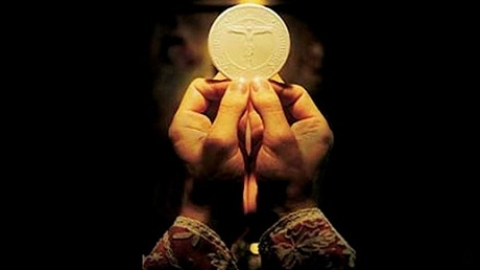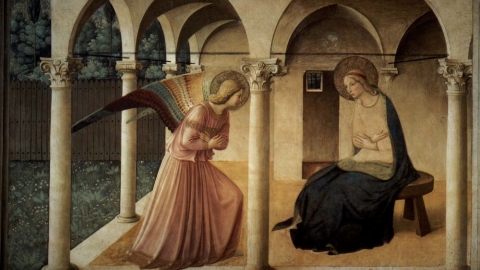Germany: Relics of St. Corona on Display at Aix-la-Chapelle/Aachen Cathedral

Sainte Corona
Tradition says that St. Corona was martyred at the age of 16 during the persecution of Christians, shortly after a Roman soldier named Victor of Damascus. Most sources indicate that they were killed in Roman Syria during the reign of Marcus Aurelius (AD 170). The Roman Martyrology mentions these two saints of the second century: “St. Victor and St. Corona, martyrs who, summoned to sacrifice to idols, preferred to sacrifice their lives for Christ. No one knew their name and that is why they received the one who marked their victory and the crown of the saints."
Otto III brought the relics of St. Corona from Rome to Aix-la-Chappelle/Aachen in Germany in the 10th century. Built by Charlemagne in the 9th century, the cathedral thus houses the relics of the saint, whose reliquary was to be presented to the public during an exhibition on historic goldsmithing planned for the summer of 2020. But, due to the circumstances, the cathedral chapter has decided to expose the reliquary earlier than expected. “St. Corona is considered, among other things, as the patron saint of epidemics. That’s what makes it so interesting right now,” said Daniela Lövenich, spokesperson for the chapter of Aix-la-Chapelle/Aachen Cathedral in the German news agency Deutsche Presse Agentur (DPA), on March 23.
St. Corona is represented with two palm trees, as a sign of her martyrdom: attached by her persecutors to the top of two palm trees brought down to the ground, she was torn to pieces when they redeployed, released from their shackles on the ground.
There is a particular devotion to St. Corona in Austria and eastern Bavaria, where several pilgrimages take place, in particular to St. Corona am Schöpfl, to the sanctuary of St. Corona in Staudach and to the sanctuary of Handlab. St. Corona is the patron saint of the Austrian village of St. Corona am Wechsel, and the site of the parish church specifies that the loggers, exposed to the dangers in the exercise of their profession, sought protection and help from St. Corona, their patroness. They entrusted themselves to her intercession, since the saint had been “executed” by two palm trees. In northern Italy, too, she is particularly venerated as patron saint by forest workers. In Anzù di Feltre, in northern Italy, there is a basilica where relics of St. Victor and St. Corona have been preserved since the 9th century. Her feast day is celebrated on May 14.
St. Corona was invoked, explains the St. Corona am Wechsel site, for constancy in the faith, against storms and bad harvests, to avoid epidemics, and for the needs of daily life. Certainly St. Corona was not specifically invoked against epidemics, like St. Roch de Montpellier (1295-1327), but all the saints can be invoked for this intention, and one cannot go without their intercession against the coronavirus infection.
(Sources : cath.ch/DPA/martyrologe/st. corona am wechsel – FSSPX.Actualités - 30/04/2020)


